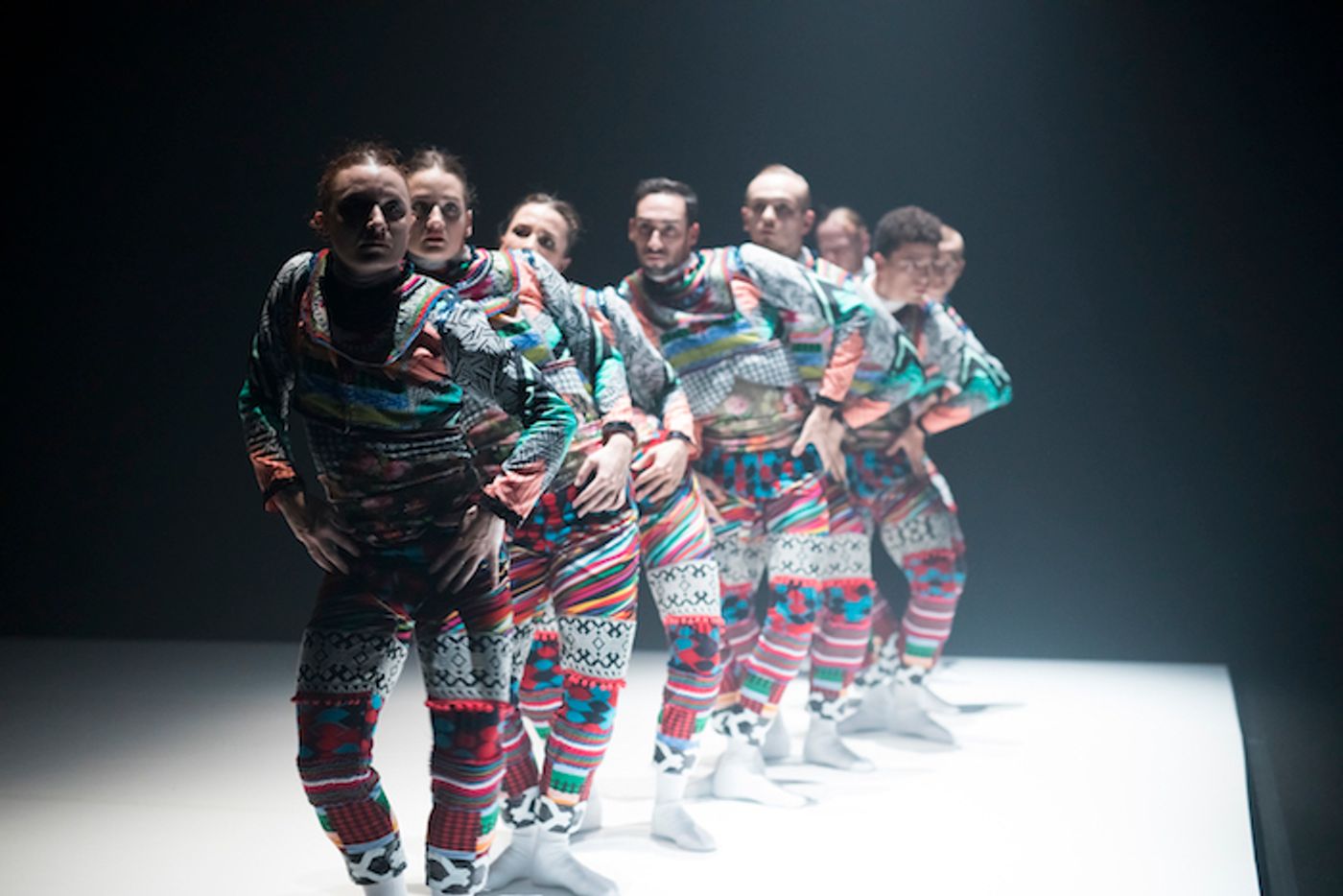Review: AWAKENING, Royal Opera House

![]() Presented by National Dance Company Wales (NDCWales), Awakening is a tour that marks the company's entry into a fresh phase of its development under the leadership of new artistic director, Fearghus Ó Conchúir.
Presented by National Dance Company Wales (NDCWales), Awakening is a tour that marks the company's entry into a fresh phase of its development under the leadership of new artistic director, Fearghus Ó Conchúir.
As part of the opening season of the Royal Opera House's newly designed Linbury Theatre, Awakening is a good indicator of the choreographic emphasis of showcasing new voices intended for this sleek and intimate space.
If the three distinctive pieces presented here are anything to go by, then NDCWales's modus operandi is to champion choreographers who push against the boundaries of what is physically, narratively and intellectually possible within dance. It's thrilling to bear witness to such ambition because on stage, and it translates into visually engrossing theatre.
The show starts with Marcus Morau's award-winning Tundra. A faceless, robotic figure picked out by a rectangular wash of dim red light rotates in the gloom to a muffled Russian lullaby. It's swiftly replaced by a troupe of eight dancers in blue, floor-skimming bell skirts, who appear to glide on the air just below their feet. How are they doing this? Hover pods? A sliding platform? Really small, precisely controlled steps?
Whatever the means, the effect is arresting, and the audience watches with rapt attention. The skirts are soon discarded offstage and the dancers reappear in costume designer Angharad Matthews' colourful, futuristic outfits.
The precision with which they entwine limbs, changing the configuration of their bodies to morph into waves as a single unit of formation is breathtaking to watch. They make it look seamless, but that's deceptive. These dancers are working really hard.
A heartbeat thuds, tinkles suggest icicles, the wind moans across the vast tundra and children chant. The sci-fi dance vocabulary against such a layered soundscape suggests something timeless but also thoroughly modern. It's about connection and disconnection, and it's easy to see why Tundra has been an often performed hit for the company. It's unlikely that you'll have ever seen bodies move quite like this in unison.
Afterimage by Brazilian Fernando Melo is a very different prospect. The curtain rises to reveal what looks like a large mirror in which the audience can see itself. A man in a blue suit sits in a chair at a desk contemplating an envelope, the ghostly image of a woman interacting with his mirror image. The mirror reveals, obscures and multiplies traces of these images, layering them like so many simultaneously recurring memories.
Where Tundra was all kinetic propulsion and abstraction, this is more delicate, thoughtful, quiet, and begins to tip into more narrative territory even if it's made up of fragments. Mostly it's all done in the chair and on the table. Lighting designer Peter Lundin's chiaroscuro ramps up the atmosphere set up by the sonics, which emulate a sustained note on a church organ and the beating propeller of a helicopter. This is indeed dance, but not as purists know it.
At 32 minutes, resident choreographer Caroline Finn's Reveller's Mass is the most visceral of the three segments. That it is inspired by Leonardo Da Vinci's The Last Supper is immediately evident. A dancer lights candles on a long, banqueting-style table to the sound of church bells and choral music, while others clump in twos and threes and yet others partake of the eucharist. There is already so much going on that the eye flits around undecided on where to land. And what to make of the naked mannequins?
Gabriella Slade's sumptuous costumes recall cassocks, but these aren't your garden variety priestly garb. Some are lacy, some are shot through with gold thread, all are luxurious and transparent. These aren't the garments of the devout. At one point, a group of dancers carry the body of a mannequin in a manner that evokes artistic depictions of Jesus Christ being reverently taken down from the cross. Then it is held aloft sensuously and swung from side to side in a manner that borders on the profane.
Very quickly, the action does dissolve into the chaos of sinful excess. To the sound of a rave-inspired didgeridoo there is self-flagellation, a man swings a woman around by her hair, people whirl like dervishes, and someone makes a contorted journey across the stage. As the mannequins are dismembered it becomes obvious that the clue is in the title of the piece. This is a contemplation on the meaning of ritual, faith, decadence twisted with humour courtesy of Edith Piaf's "Je Ne Regrette Rien".
It's NDCWales's declared commitment to make "engaging and innovative dance with and for all kinds of people in all kinds of places." With dancers from France, Reunion Island, England, Switzerland, Italy, Netherlands and Wales, this ethos is also reflected in the offstage personnel of the company. It makes a punter very excited to see where the company will turn to next.
Awakening played at the Royal Opera House
Photo credit: Rhys Cozens
Reader Reviews

Videos

